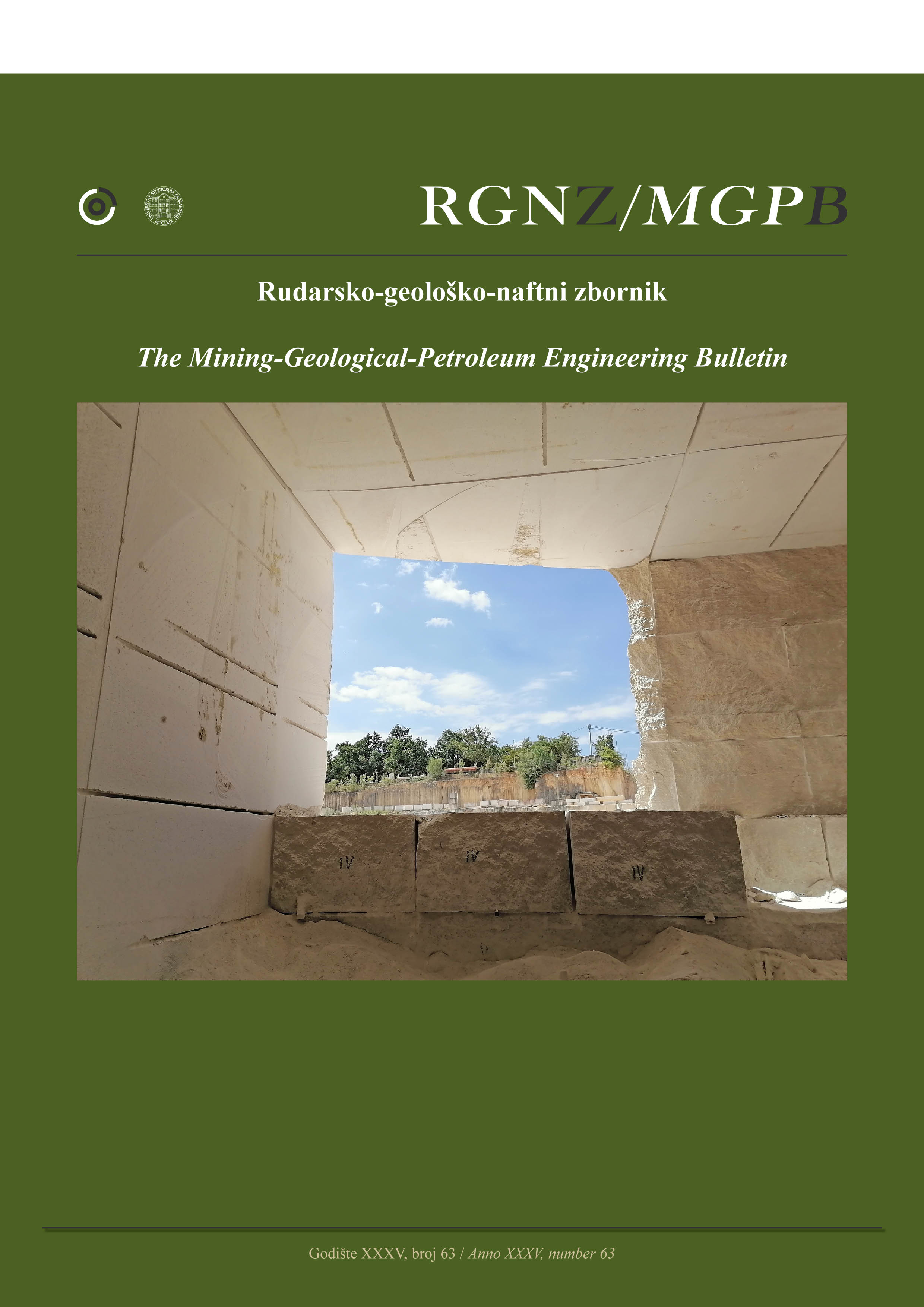Late Quaternary activity of the Haramachi segment of the Futaba Fault in Northeast Japan through topographic anaglyph images and borehole core sediment analysis
DOI:
https://doi.org/10.17794/rgn.2023.2.12Keywords:
Late Quaternary activity, Haramachi segment, Futaba Fault Zone, Northeast JapanAbstract
The Haramachi Fault segment in the northeastern part of Honshu Island, Japan, has mainly sinistral fault movements with minor reverse component within the Futaba Fault Zone in the northeastern Japan arc. The 2011 Mw 9.0 earthquake occurred off the Pacific coast of Tohoku which caused large crustal deformations. Despite being the closest active fault to the epicenter, very limited investigation has been conducted on the Futaba Fault Zone. Previous studies used smaller scale topographic maps and fault activity was estimated only from trenching and borehole investigations in the central part of the Haramachi Fault segment. Thus, geometry, kinematic, and recent tectonic activity of the fault segment is not well identified, especially in northern part. In this study, we use a combination of high-resolution DEMs (2-m and 5-m mesh), several types of topographic anaglyph images (slope, negative and positive openness), and conducted field survey to confirm remote sensing interpretation. Subtle surface expression of deformation associated with active faulting, such as deformed terrace risers, deflected drainages, and small fault scarps can now be identified more clearly. Several new fault strands in the northern part of the segment were found supported by fault outcrops found in the field confirming the recent activity of the fault system. The new estimation of the total length of the Haramachi segment produced from the approach of this study yields 25 km, which is capable of producing Mw 6.5 – 7.0 or Mjma 7.2 earthquakes if ruptures were to occur altogether in the future. Moreover, a shallow borehole survey and radiocarbon dating from the soil organic material has revealed the minimal timing estimation of the most recent faulting in the Haramachi segment to be 3694 ± 24 BP. This research provides a revised understanding of active fault distribution and deformation associated with the Haramachi segment and validates the timing of the most recent faulting event more broadly.
Downloads
Published
How to Cite
Issue
Section
License
Copyright (c) 2023 Anggraini Rizkita Puji, Naoya Takahashi, Shinji Toda

This work is licensed under a Creative Commons Attribution 4.0 International License.
Creative Commons-BY
Authors who publish with this journal agree to the following terms:
In agreeing this form, you certify that:
- You read the ethical codex of the RGN zbornik available at journal web.
- You submitted work is your original work, and has not previously been published and does not include any form of plagiarism.
- You own copyright in the submitted work, and are therefore permitted to assign the licence to publish to RGN zbornik.
- Your submitted work contains no violation of any existing copyright or other third party right or any material of an obscene, libellous or otherwise unlawful nature.
- You have obtained permission for and acknowledged the source of any illustrations, diagrams or other material included in the work of which you are not the copyright owner.
- You have taken due care to ensure the accuracy of the work, and that, to the best of your knowledge, there are no false statements made within it.
- All co-authors of this submitted work are aware of, and in agreement with, the terms of this licence and that the submitted manuscript has been approved by these authors.
Publication licence
You retain copyright in your submitted work, according to journal license policy (CC-BY). By signing this form you agree that RGN zbornik may publish it under the publication licence. In summary the licence allows the following:
Anyone is free:
- To copy, distribute, display, and perform the work.
- To make derivative works.
Under the following conditions:
- The original author must always be given credit.
- The work may not be used for commercial purposes.
- If the work is altered, transformed, or built upon, the resulting work may only be distributed under a licence identical to this one.
Exceptions to the licence
In addition to publishing the work printed under the above licence, RGN zbornik will also enable the work to be visible online.
The journal editorial can change the licence rules anytime but it cannot retroactively restrict author(s) rights.


